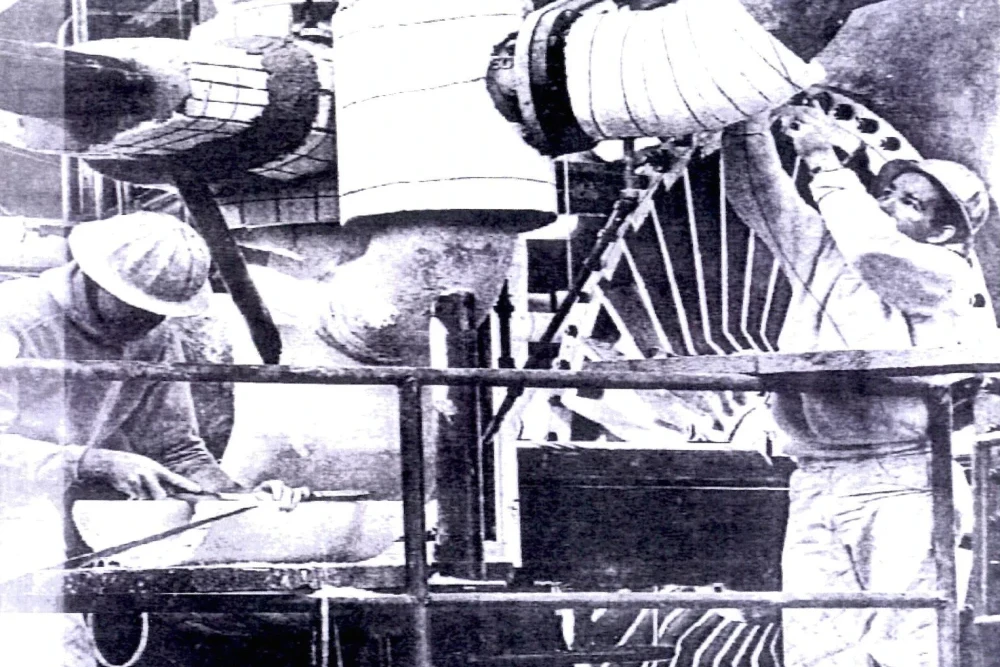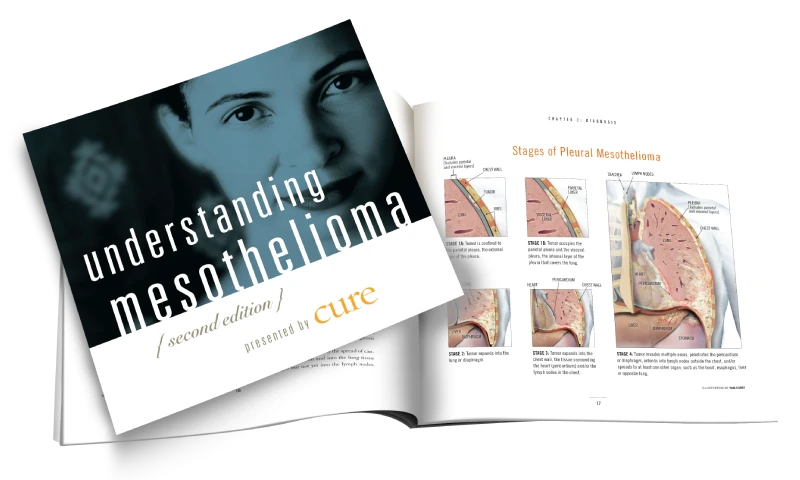Home › Asbestos Job Sites › Fertilizer Plants
Asbestos Exposure in Louisiana Fertilizer Plants
Before the 1980s, asbestos was commonly used as an insulation material in Louisiana fertilizer plants due to its durability, affordability, and resistance to heat and fire. Many older fertilizer plants still contain some asbestos-containing materials, and newer ones may use vermiculite fertilizer, which also may contain asbestos. Fertilizer plant workers in Louisiana may have faced asbestos exposure and could now be at risk of developing mesothelioma.
Last Updated:
- October 20, 2025
Which Louisiana Fertilizer Plants Exposed Workers to Asbestos?
Many Louisiana fertilizer plants have been linked to asbestos exposure in workers, largely because asbestos-containing materials were commonly used in the construction and operation of these facilities before the public became aware of the dangers of asbestos in the late 20th century. Louisiana is home to many fertilizer plants due to its proximity to the Gulf of Mexico and the natural resources along the Mississippi River.
Some of the fertilizer plants in Louisiana known to have used asbestos-containing materials include the following:
View 4 Locations:
- CF Industries in Donaldsonville
- Mosaic (formerly IMC-Agrico, Uncle Sam) in St. James
- Mosaic (formerly IMC-Agrico) in Faustina
- Terra (formerly Triad) in Donaldsonville
Did You Know?
The Mississippi River between Baton Rouge and New Orleans has about 150 chemical production sites. Increased cancer rates have been recorded among residents living in the corridor, earning it the nickname “Cancer Alley.” Three massive fertilizer plants are located in one short section along the Mississippi.
Causes of Asbestos Exposure for Fertilizer Plant Workers
Asbestos was commonly used as insulation in boilers and pipes—essential components of fertilizer plants. Thus, workers were regularly exposed to asbestos at fertilized plants.
Fertilizer plants typically contain large amounts of piping that connect manufacturing and storage areas. These pipes, along with tanks, boilers, and pumps at these facilities, likely contained asbestos in the past. In older plants, asbestos insulation is still in place. Workers in plants built before the 1980s are still at risk of asbestos exposure today, particularly from deteriorating insulation.
A Fertilizer Plant Worker’s Story
“My dad worked at a fertilizer plant in Convent, Louisiana.”
He did technical things around the plant as far as cutting pipes, pipe fittings, and welding. The normal day in and day out of a contractor at a plant. I’m not aware that my dad knew that he was being exposed to asbestos at the plant. He was never warned of any type of dangers or harmful products or chemicals or anything at the plant.
Asbestos Products Used by Fertilizer Plant Workers
Asbestos was a widely used component in fertilizer plant equipment that generated intense heat. Thus, fertilizer plant workers were regularly exposed to asbestos, particularly during the equipment’s installation, maintenance, and operation. Asbestos products were commonly used in various equipment found in fertilizer plants, including:
- Pipe Insulation
- Insulation Cements
- Boilers
- Pipes
- Ductwork
- Compressors
- Turbines
- Pumps
- Asbestos Gaskets
- Construction and building materials
Did You Know?
Even workers who did not directly use asbestos-containing materials in their work could still be exposed if they worked near areas where asbestos was used. Asbestos fibers are lightweight and can easily travel through the air to other parts of the fertilizer plant.
What Trades Were at Risk of Asbestos Exposure from Fertilizer Plants?

Union workers in various trades could have been exposed to asbestos at work, even if they did not utilize asbestos-containing products directly in performing their duties. Workers could just as easily be exposed by working near other trades who worked hands-on with asbestos products.
Some occupations in fertilizer plants that may have faced asbestos exposure include the following:
- Boilermakers
- Electricians
- Pipefitters
- Insulators
- Plumbers
- Welders
- Millwrights
- Machinists
- Operators
- Laborers
- Maintenance Workers
- Demolition Workers
At-Risk Family Members of Fertilizer Plant Workers
Fertilizer plant workers’ family members are also at risk of inhaling asbestos fibers through secondary exposure. Exposed workers often returned home without changing out of their asbestos-laden work clothes. They might have hugged their children before changing, exposing the children to asbestos fibers. In addition, spouses and other family members who laundered the clothing were likely exposed to the material. Those family members now also face the possibility of developing mesothelioma.
Questions About Mesothelioma?
Many workers are uncertain about what steps to take after receiving a mesothelioma diagnosis.
Were Fertilizer Plant Workers in Louisiana Protected from Asbestos?
Unfortunately, little, if anything, was done to protect fertilizer plant workers from asbestos exposure. The manufacturers of deadly asbestos products knew their goods could cause numerous diseases, including asbestosis, lung cancer, and mesothelioma, yet these manufacturers and the owners of the fertilizer plants that used the products kept that dangerous secret, exposing millions of innocent workers to the cancer-causing carcinogen every day.
Although fertilizer plant owners often knew the dangers of asbestos, they put profits over people’s safety and health. Because of this, workers exposed to asbestos may have grounds for legal action against those responsible for their exposure.
Compensation for Asbestos Exposure in Louisiana Fertilizer Plants
Louisiana fertilizer plant workers and their family members who have been diagnosed with mesothelioma due to asbestos exposure have two main options for compensation: mesothelioma lawsuits and asbestos trust fund claims.
1) Mesothelioma Lawsuits: A mesothelioma lawsuit aims to hold asbestos product manufacturers accountable for damages such as medical expenses, lost income, pain, and suffering.
2) Asbestos Trust Funds: Many companies set up trust funds to compensate victims of asbestos-related diseases, which contain an estimated $30 billion combined.
Did You Know?
Mesothelioma and lung cancer patients may be eligible for anywhere from $500,000 to $10 million in compensation. However, results vary and are not guaranteed.
Mesothelioma Settlements and Verdicts for Fertilizer Plant Workers
Our sponsor, Baron & Budd, P.C., has obtained millions of dollars in settlements on behalf of plant workers who were exposed to asbestos and later diagnosed with mesothelioma, including:
Over $7 Million Settlement for a Boilermaker With Pleural Mesothelioma
Our sponsor recovered over $7 million in total settlements for a boilermaker who worked at many petrochemical facilities along the Mississippi River between New Orleans and Baton Rouge. He suffered from pleural mesothelioma.
Over $7 Million Settlement for a Pipefitter/ Welder Who Worked Along the Mississippi River
Our sponsor recovered a settlement of more than $7 million for a pipefitter and welder who worked at petrochemical plants along the Mississippi River around Baton Rouge. He suffered from biphasic pleural mesothelioma.
Results are not guaranteed and vary.

Order Your Free Mesothelioma Book
Contact Louisiana Mesothelioma Advocates

If you or a loved one worked at a fertilizer plant in Louisiana, even if it was decades ago, and has developed mesothelioma, contact Louisiana Mesothelioma Advocates. We will connect you to our sponsor, Baron & Budd, P.C., who can recommend the best mesothelioma physicians and may be able pursue compensation for you and your family. Mesothelioma is a very aggressive cancer. We urge you to act quickly.

Content Reviewed by
Todd Kale
Todd Kale meets with mesothelioma patients and their families across Louisiana to investigate their asbestos exposure, providing compassionate support and guidance during a difficult time.
Jump to a topic
- Louisiana Fertilizer Plants With Asbestos Exposure
- Causes of Asbestos Exposure for Fertilizer Plant Workers
- Highest-Risk Trades at Fertilizer Plants
- Was Anything Done to Protect Workers in Louisiana?
- Compensation Available for Fertilizer Plant Workers
- Mesothelioma Settlements for Fertilizer Plant Workers
- Contact Louisiana Mesothelioma Advocates

